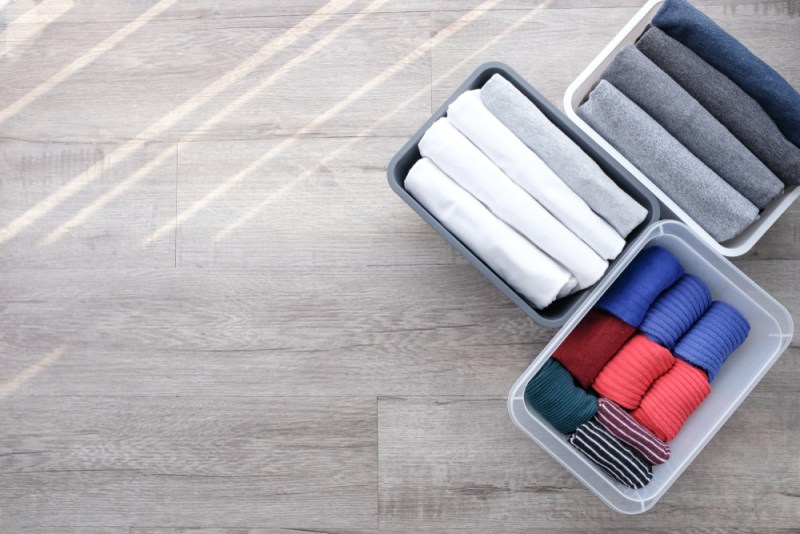Marie Kondo, author of The Life-changing Magic of Tidying Up: the Japanese Art of Decluttering and Organizing, and star of Netflix’s Tidying Up With Marie Kondo, has spiked popularity in living a minimalist lifestyle. She has created the iconic KonMari decluttering method that has been trending throughout the world. The KonMari method focuses around discarding items and developing a new mindset. It’s a two-part system built around discarding and organizing items to keep things tidy. There are multiple steps that the KonMari process walks its readers and viewers through, but even though Marie Kondo claims it’s a “one size fits all” process, that’s not entirely the case. These are some common mistakes made throughout the KonMari process.
Mistake #1: Relying on “joy”
Not trying to come across as a bitter, soulless human with that title but “does this spark joy?” is a phrase you’ll hear a lot throughout the KonMari method. It’s intended to be an internal process of which you let things that don’t “spark joy” go. For instance, Kondo tells clients to hold every item they own in their hands. Clients then are able to physically sense whether it sparks joy. If yes, the item stays. If no, they get rid of it. For some of her clients, this is a fairly easy thing to grasp, however, it can be a little more difficult for other people. Getting that “spark of joy” feeling with material items, especially ones that are necessary but boring (looking at you, toilet brush), can be next to impossible. But you can’t really get rid of a toilet brush and expect to keep your bathroom germ-free, right? It works both ways. People can attach feelings of joy to just about everything they own; Hanging on to your child’s first pacifier or your shoulder-padded jacket you wore once in the 80s (let them go, please).
If “sparking joy” isn’t a concept that resonates well with you, try an alternative method. Would you buy that item today if you saw it at a store? Is it beautiful? Is it useful?

Mistake #2: Not Having A Plan
Not having a plan can make just about everything more difficult. After reading Marie Kondo’s book or watching her series on Netflix, it can be tempting to dive right in. But that’s not what KonMari is about. To truly optimize this method of decluttering, you have to plan for it. This method doesn’t tolerate procrastination (something I am highly guilty of) – so you can’t start this task, stop, and expect to pick it back up again with the same amount of dedication. It helps to think of it as preparing for a move; You’re not rushing or multi-tasking, just focusing on the task at hand. The mistake a lot of people make with the KonMari method, in this sense, is starting immediately without a plan, realizing how daunting it can be, and quitting halfway.
Mistake #3: Not Adapting To Your Specific Needs
The KonMari method is pretty strict. Marie is adamant that to see the best results, her instructions must be followed precisely. The problem is that her rules and instructions often assume types of living space, storage capability, and beliefs. You may have no trouble applying her instructions to your home, literally, but it can cause a few roadblocks for others. The good news is that you can still declutter and clean your home by adapting the KonMari method to fit your specific needs. Think of it more like relationship advice or workout tips. You have to take what works best for you and your specific needs and not try to make your needs fit someone else’s needs.

Mistake #4: Not Maintaining Your Space
The KonMari method claims that once you go through this process to declutter your home, you’ll never have to “tidy up” again. Which isn’t entirely false, but it’s not entirely true either. Everyday items such as mail and items you purchase, can build up. After using this method to declutter, you’ll minimize a lot of your possessions which will ultimately minimize your “tidying up” tasks as well. Maintaining your space after using the KonMari method to clean and declutter your house is essential.
Mistake #5: Not Finishing What’s Been Started
As previously stated, this is a method that doesn’t tolerate procrastination or half-the-effort mentality. Self home improvement projects are easy to be excited about in the beginning but it’s also easy to lose steam mid way and end up shelving the rest of the project for later. If you try the KonMari method and realize halfway through that it isn’t for you, you’re not the only one. Don’t consider it a failure on your part. There are many ways to declutter, and if this one isn’t your style, there’s another method out there for you.
